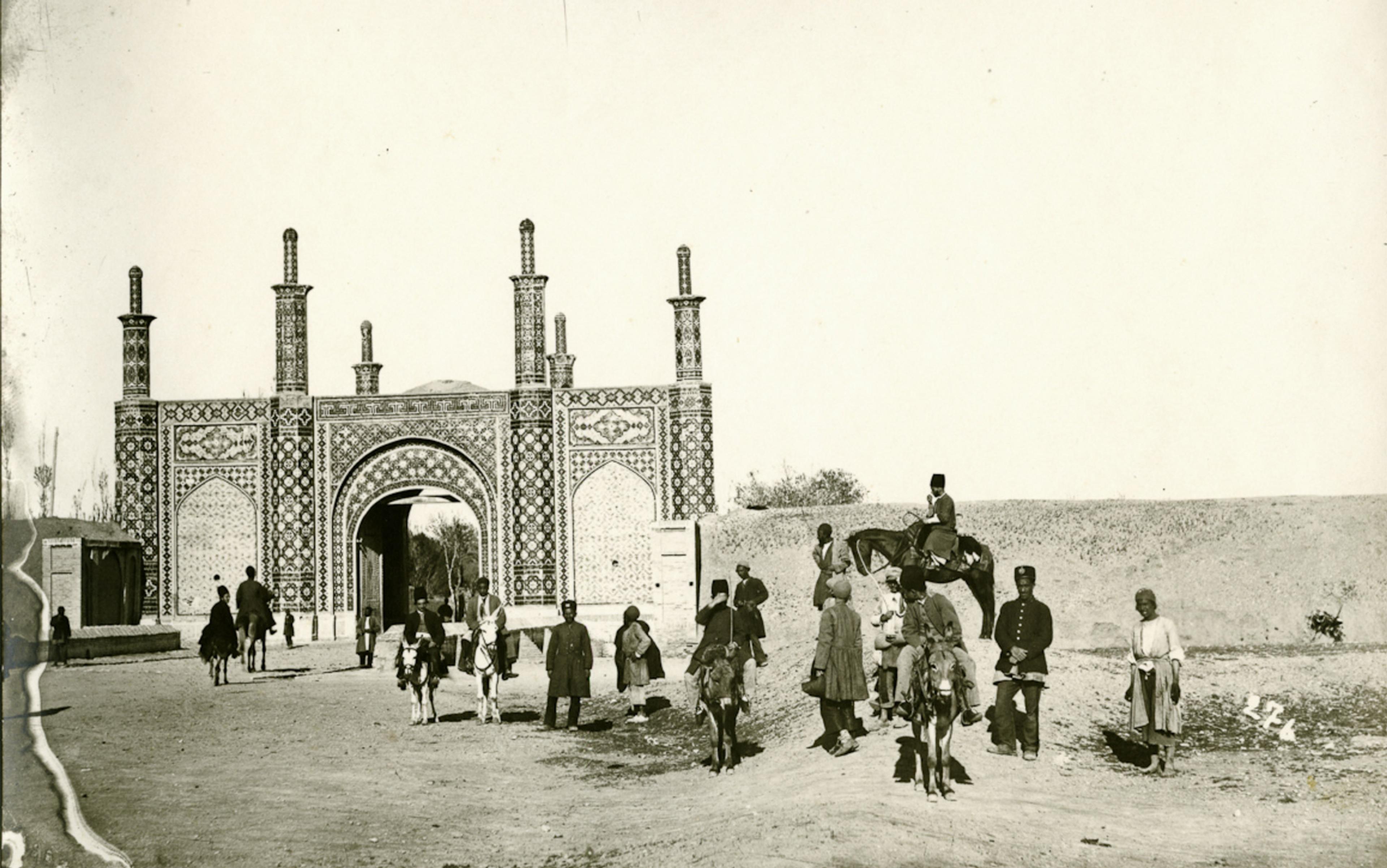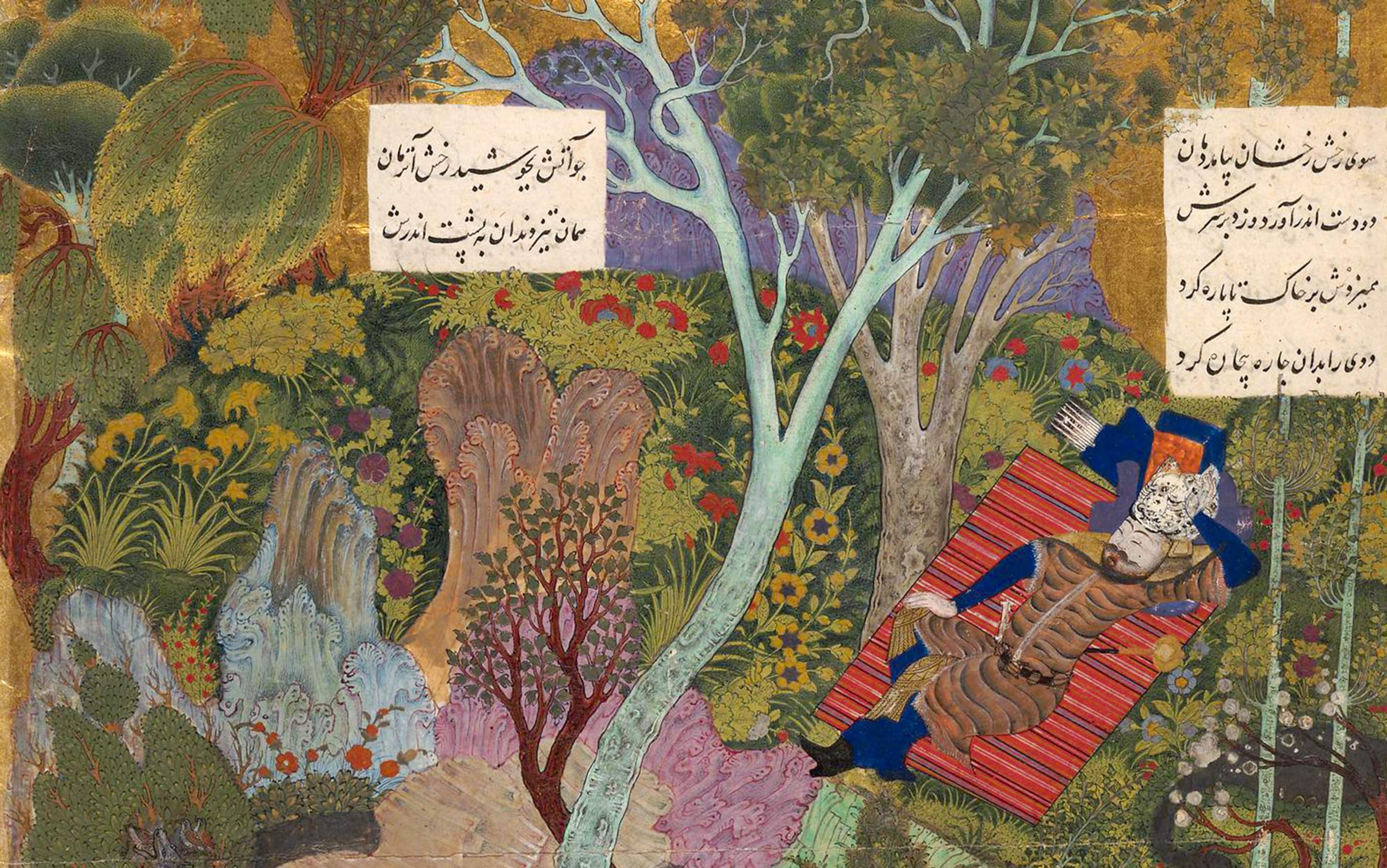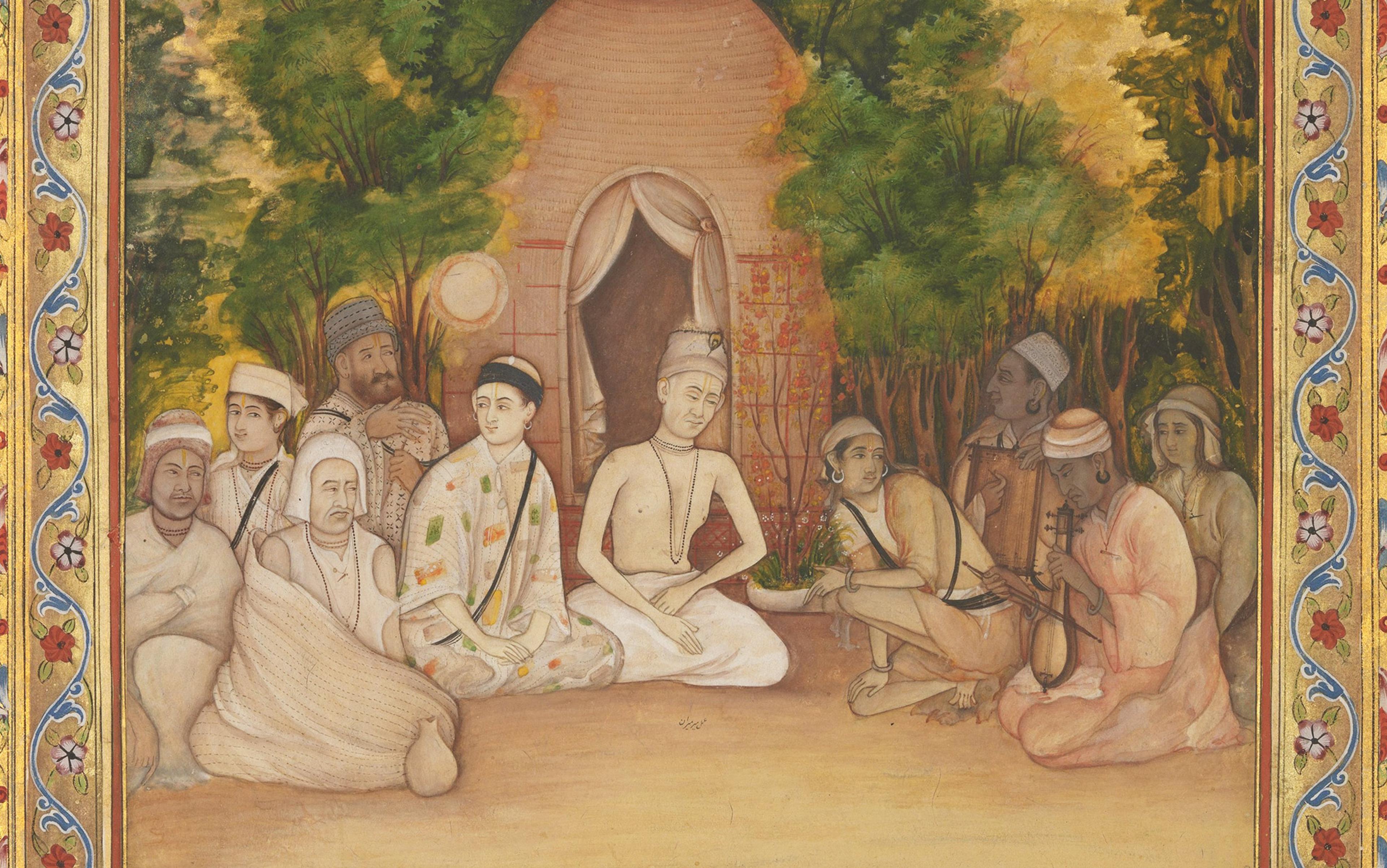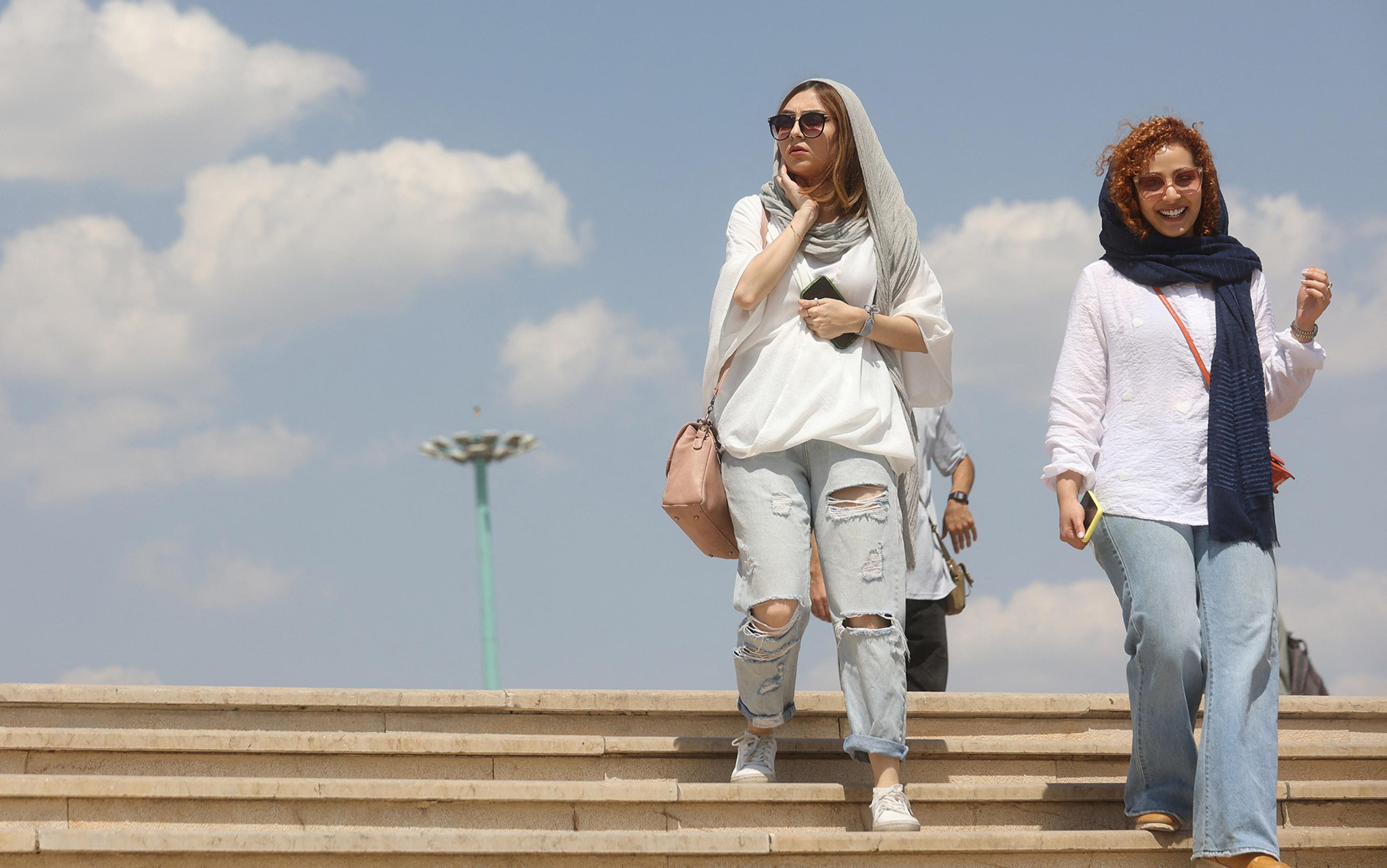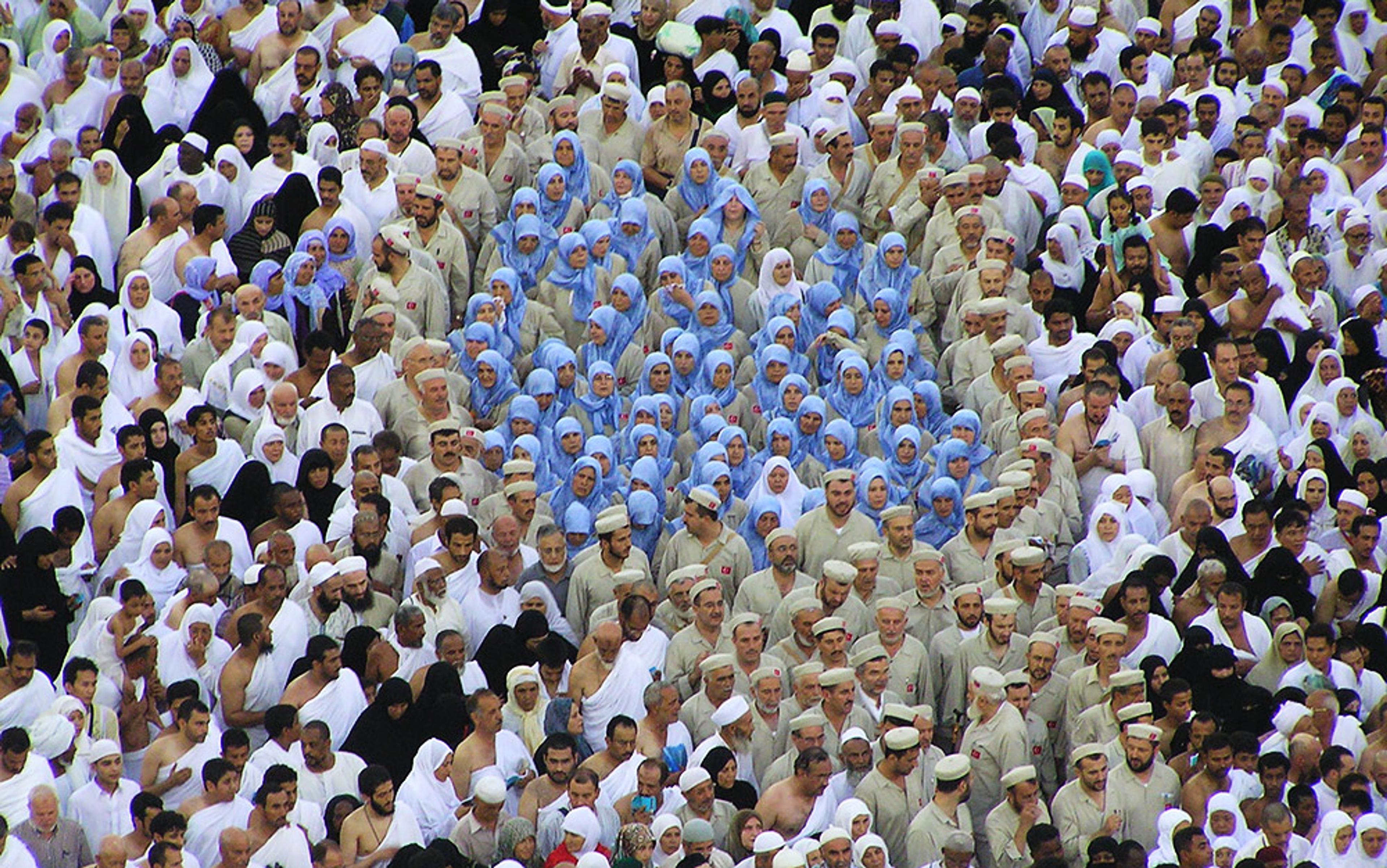Cultural exchange is often assumed to be progressive, but it has neither an inherent politics nor an inevitable outcome. As nationalism rises across the globe, many see ‘cultural exchange’ as the antidote to nationalist xenophobia. Such exchange was, in fact, an integral part of the emergence of national literatures, cultures and identities in Iran and South Asia. Rather than resulting in greater cosmopolitanism, Indo-Iranian exchange fostered modern nationalism.
Today, Persian is the national language of Iran. Although it has a long history there, its national status and close association with the country depend on events in the 19th century. As the Russian Empire swallowed up swathes of Iranian territory in the 1810s and ’20s, and the sclerotic Qajar dynasty ruling Iran proved incapable of resistance, Iranian nationalism emerged to challenge both foreign imperialism and local despotism.
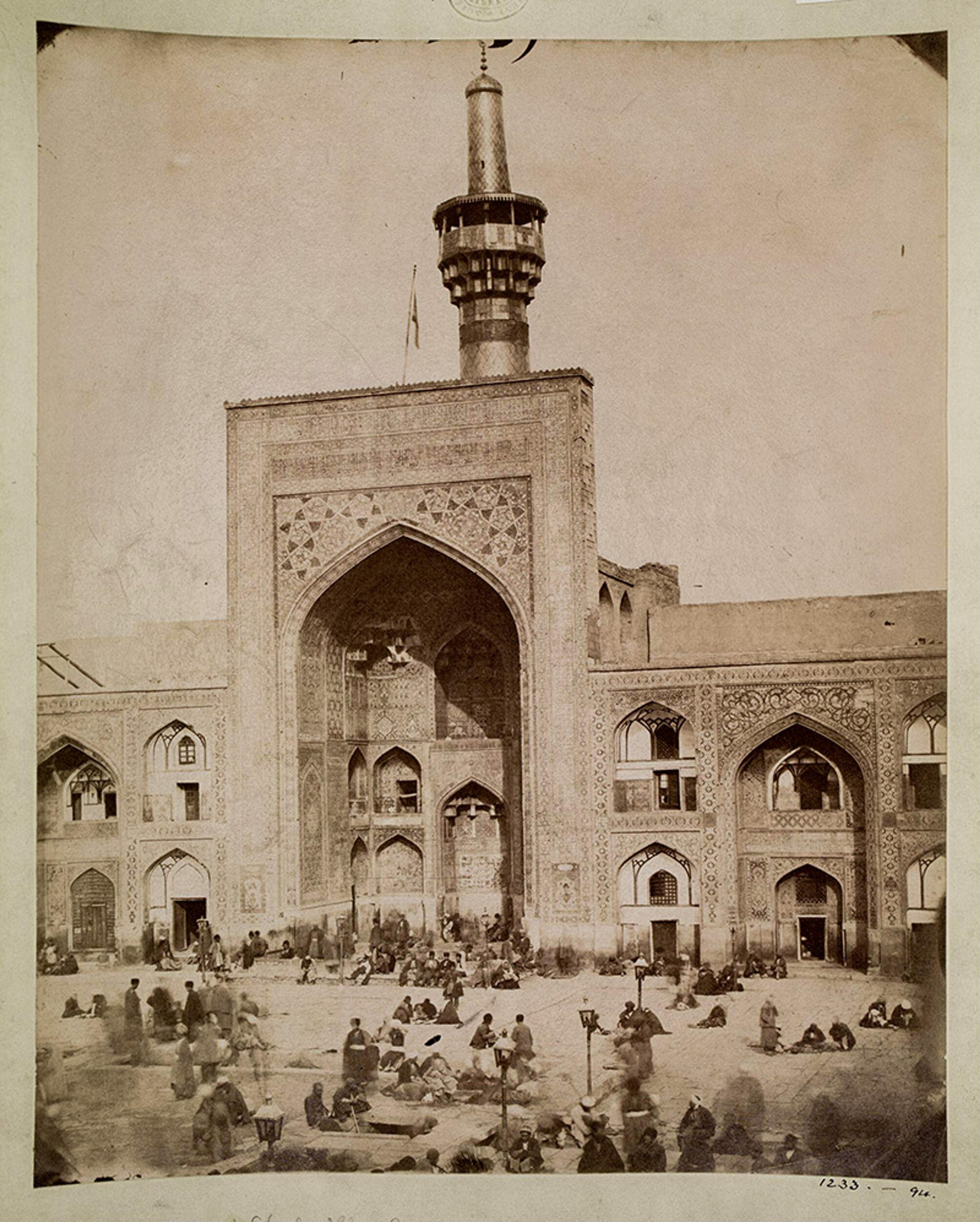
Photograph of the Shah Mosque, Persia, in the late 19th century. Courtesy the V&A Museum, London
By the end of the 19th century, Iranian intellectuals were transforming Persian from the lingua franca of a centreless Persianate world spanning much of Asia into the language of national identity in the nation-state of Iran. Nationalist modernisers made reforming the Persian language a central project, whether they were democratic revolutionaries of the Constitutional Revolution (1905-11) or the authoritarian shahs of the Pahlavi dynasty (1925-79). Drawing on modern literary histories of Persian written by both Iranians and Indians, they refashioned Persian into a national language, and Persian literature into national heritage, positioning Iran as the proprietor of the Persianate tradition.
The Persian language we know today was born out of interaction with Arabic and Islam. Its precursors parsig and dari – now identified together as ‘Middle Persian’ – had been used by Zoroastrian priests and by the Sasanians, the Iranian dynasty that fell to the 7th-century Arab-Islamic conquest of Iran. Within a couple of centuries after the rise of Islam, the Persian language took on a new identity. It developed a new Arabic-derived script; large amounts of Arabic loanwords; a literature heavily indebted to Arabic forms, metres and imagery; and a new name, farsi, also influenced by Arabic. (The word farsi reflects, in part, the Arabic pronunciation of the earlier parsig.) Linguists call this Arabised form of the language ‘New Persian’. In the 9th century, Muslim empires began patronising New Persian as a vehicle for Islam, and spread it to the Indian subcontinent.
Modern literary histories offered a different narrative of Persian. Twentieth-century Iranian nationalists sought to distinguish the Persian language from Arabic. For them, the language was part of a continuous Iranian civilisation stretching back to the Achaemenids (the dynasty that ruled c700-330 BCE), encompassing the ‘Old Persian’ of the Achaemenid inscriptions, the ‘Middle Persian’ of the Sasanian court (c225-650 CE), and the ‘New Persian’ that followed the rise of Islam and endured to the present day. Iranian nationalists like the great literary historian Muhammad-Taqi Bahar (1886-1951) emphasised the continuity of Persian over time, uninterrupted by Islam – and, by extension, Arabic – which they saw as belonging to a distinct civilisation.
Bahar’s civilisational paradigm, predicated on the notion of linguistic integrity and the association of a people with its language, came from European philology. His efforts to show Iranian continuity before and after the rise of Islam were a nationalist project, shaped by European Orientalism, especially its new philological knowledge of ancient Iranian languages. These 19th-century European philologists, and Bahar and many others who learned from their work, grouped Persian with the Indo-European family of languages distinct from Semitic languages like Arabic. Rather than considering New Persian as a mixed language with Arabic elements, they built a narrative that emphasised the independence and continuity of Persian over the course of centuries. In doing so, they followed a paradigm established by 19th-century Germanic linguists whose scholarship classified ‘Old English’ (what had been known as the Anglo-Saxon language) and ‘Middle English’ as precursors to modern English.
Bahar and other 19th-century Iranian nationalists were not the only ones interested in the history of the Persian language and literature. Indian Muslims were also concerned with the Persianate literary heritage. Persian had been a language of power and learning in South Asia since the 11th century – and they had as much of a claim to it as did Iranians.
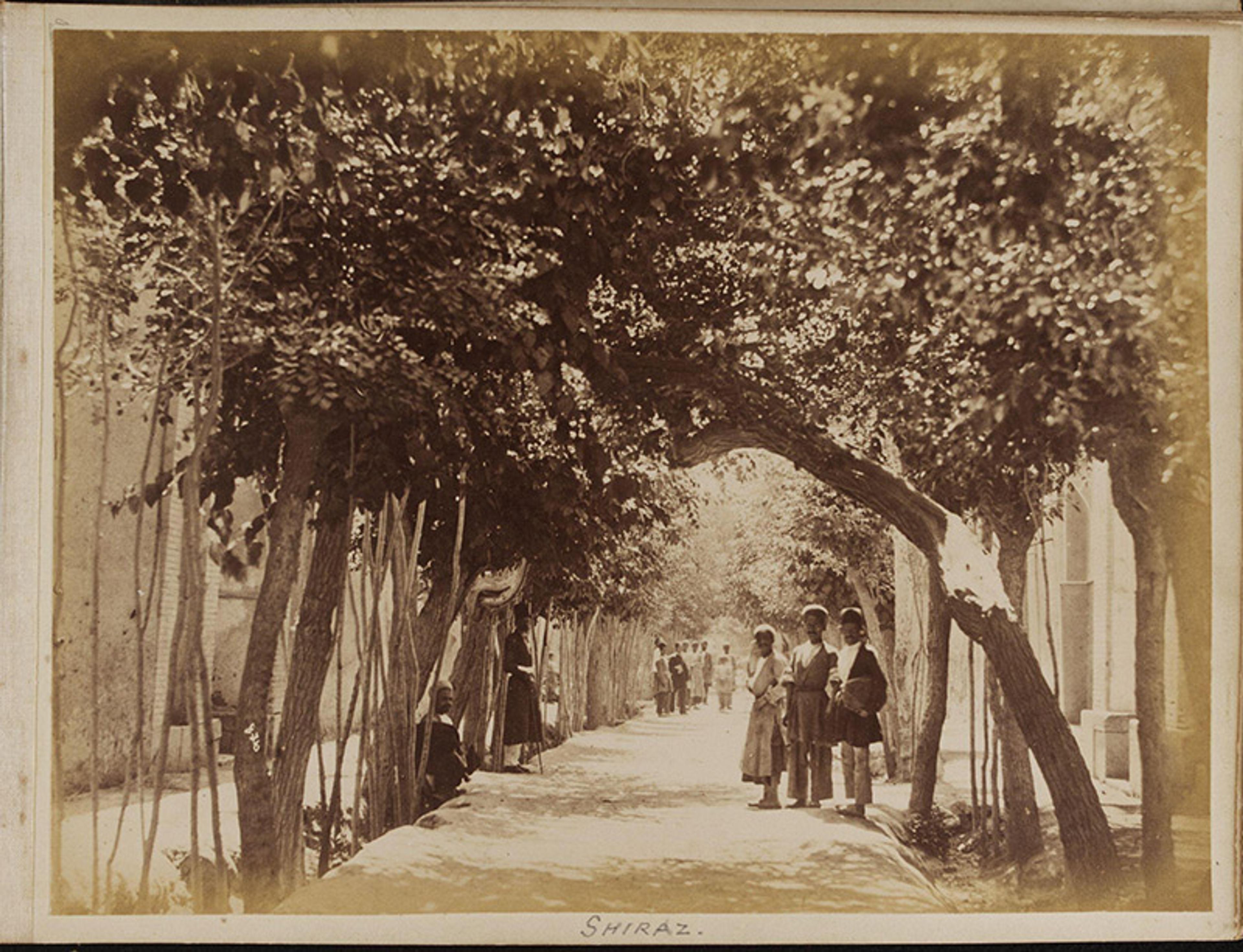
A tree-lined street in Shiraz, Iran, c1895-1900. Photo by Antoin Sevruguin. Courtesy the V&A Museum, London
The relationship between Persian and a local language of South Asia that would later be called Urdu mirrored the earlier relationship between Arabic and Persian. The elements that would constitute Urdu’s identity as a language were largely borrowed from Persian. Chief among them is the Perso-Arabic script in which Urdu is written, as opposed to the Devanagari script that would come to be associated with Hindi. Urdu also has tens of thousands of Persian loanwords, like dost (friend) and dil (heart), including Persian words of Arabic origin, like zarūrat (necessity). Moreover, Urdu’s linguistic identity was connected to literature in Perso-Arabic forms like the ghazal, an amorous form of lyric poetry.
South Asian Muslim literary historians constructed a very different kind of history of Urdu than the Iranians had of Persian. Contrary to the Iranian story of continuity before and after the coming of Islam, South Asians emphasised rupture and hybridity as key to Urdu’s origins. According to this telling, Urdu began with the arrival of Muslim empires in the Indian subcontinent in the 11th and 12th centuries. Though the language had been used by people of various religions, from the 19th century onwards South Asians increasingly saw Urdu as the language of North Indian Muslims, in contrast to Hindi, associated with Hindus. Rather than conceiving of their language in terms of distinction from others, Indian Muslims embraced hybridity. Many still regard Urdu as inherently a mélange of languages: an Indic element (often described as Hindi) as well as Persian, Arabic and Turkish. The inclusion of Turkish in Urdu’s linguistic pedigree is especially notable.
Iranian nationalists aligned themselves with the new Indo-European philology
The name of the language ‘urdu’ comes from a Turkic word for ‘camp’, and the English word ‘horde’ shares its Turkic etymology. Aside from this word, however, Turkic elements in Urdu are few and far between. One study found about 100 Turkic words, most of them obscure, out of 54,000 in a major Urdu dictionary. For comparison, English has about as many loanwords from Japanese (like ‘tycoon’ and ‘tsunami’).
Claiming that Urdu was a mix that included Turkish allowed Indian Muslims to claim a genealogy that connected them, in a way, to the Ottoman Empire at a time when many Muslims longed for a powerful caliphate to counter the weakness they felt living under British rule.
For modern Indian Muslims, treating ‘Arabic’ as a separate contributor to Urdu from ‘Persian’ was another important part of giving Urdu a proper Muslim pedigree, a connection to ‘Muslim lands’ like the Arab world. In fact, Urdu’s many Arabic loanwords were borrowed through Persian, and they still bore the traces of Persian pronunciation and spelling. Thus, words like zarūrat (necessity) – ultimately from Arabic ḍarūra, but borrowed into Urdu from Persian zarūrat – came to be conceived of as constituting the ‘Arabic element’ in Urdu. To make another comparison with English, this is a little like insisting that the English word ‘ramen’ (from Japanese rāmen) should be considered a Chinese rather than Japanese loanword into English, since the Japanese word ultimately derives from the Mandarin lāmiàn.
Just as Indian Muslims were claiming Turkish, Arabic and Persian as the Islamic progenitors of Urdu in the 19th and early 20th centuries, these same languages were being adopted as vehicles for secular nationalist projects in the countries where they were spoken. So these two historical narratives – Persian discreteness and Urdu hybridity – took place at the same time and are contradictory, reflecting different relationships to Orientalist forms of knowledge about language.
Iranian nationalists aligned themselves with the new Indo-European philology, reading national history through linguistics. So, like the European linguists who established an evolutionary approach to language, the Iranians emphasised continuity, in this case with the pre-Islamic period and a linear development from Old to Middle to New Persian. British colonialism and Hindu nationalism made a narrative of enduring linguistic history unavailable to Indian Muslims. The British identified Sanskrit as the classical heritage of the Hindus, whereas they associated Muslims with Arabic and Persian textual heritage that came to the subcontinent from the Middle East and Central Asia. As such, they situated Hindi, and the Hindus, as the inheritors of Sanskrit, heirs to an enduring and indigenous ‘Aryan’ civilisation, and positioned Urdu-speaking Muslims as foreigners, outsiders to India.
As early as the 1850s, scholars proposed that the ancestors of the first Sanskrit speakers had come to India from elsewhere. More recently, genetic evidence has helped establish a scholarly consensus around the migration of this community from Central Asia to India. Nonetheless, the idea of ‘indigenous’ Hindus and ‘foreign’ Muslims proved much more difficult to dislodge. The notion of irreconcilable difference between these Hindus and Muslims contributed to the 1947 partition of British India into the independent nations of India and Pakistan: the greatest mass migration in human history, leaving a million or more dead and 15 million displaced.
The Iranian nationalists’ narrative of Persian indigeneity was similarly ethnocentric. It became the cornerstone of the 20th-century Pahlavi dynasty’s ideology, which marginalised Iran’s minorities such as the Arabs. Identification with ‘Aryanism’ remains common to this day in Iran.

A family group gathered around a kursi table in Iran, c1895-1900. Photo by Antoin Sevruguin. Courtesy the V&A Museum, London
All of this is to show that modern nationalist narratives about language departed radically from how Iranians and Indians had for centuries before conceived of language, of themselves, and of their relationship to Persian. From about 900 to 1900, Persian had been a cosmopolitan lingua franca, a common idiom of learning and statecraft across much of the eastern Islamic world, from the Balkans to China. Rigid hierarchies, among them age, gender, social status and class, stratified Persianate societies. They were cosmopolitan, however, in the sense that ethnicity and language did not form the basis of hierarchies; there were no special privileges reserved for native Persian speakers. Indeed, before the 19th century, no such concept of ‘native speaker’ or ‘mother tongue’ existed, and having a Persian education was much more significant than speaking Persian at home. There had been no geographic core or centre to the Persianate world. If anything, it could be argued that its heart lay in India, where various dynasties like the Mughals patronised the language, outpacing even Iran in Persian literary production.
They shared space in shrines and seminaries, and worked and socialised in the same circles
Like Russian imperialism in Iran, British colonial rule in India precipitated deep social and political change. Before the 19th century, no one thought of Persian or Urdu as exclusively associated with any particular religious group. But British colonial rule brought with it the association between a people and a language and helped establish Urdu as the language of Muslim patrimony in northern India. Initially, the British East India Company had continued the centuries-long practice of patronising Persian, but in the 1830s the logic of modern nationalism increasingly tied Persian to Iran, disqualifying it as a ‘local’ language for northern India. After the failed anticolonial revolt of 1857, the British feared they had lost touch with ‘ordinary’ Indians. This reinforced the shift away from British rule through the written Persian tradition, coming to favour instead languages they deemed ‘vernacular’, grounded in everyday life in India, such as Urdu.
Such staggering losses of power and territory to European empires in the 19th century provoked much soul-searching among Muslim intellectuals in Iran and India. A few embraced partial or total Westernisation, seeing the Persianate tradition as dead weight preventing them from surviving the onslaught of European power. The Iranian Sayyid Hasan Taqizadah (1878-1970), for example, called for abandoning Persian’s Arabic-based script in favour of the Latin alphabet. Other modernisers, like the Indian Muslim scholar Shibli Nuʿmani (1857-1914), took a more nuanced position. They believed that tradition had to be reformed in order to survive the conditions of modernity, but that they could also draw on that heritage as a resource in the process of modernisation. This kind of middle-ground approach prevailed in Iran and India, where intellectuals sought to develop modern, national cultures.
Importantly, Iranian and Indian reformers shared both a Persianate literary tradition and the condition of colonial subjugation. Together, this modern experience of colonialism and a literary heritage in common provided the basis for a shared Indo-Iranian project of modernisation. Muslim intellectuals – and their work and ideas – circulated between Iran and India in the first half of the 20th century, building on enduring cosmopolitan networks of Persianate exchange. Urdu-speaking intellectuals in northern India were typically literate in Persian and were attuned to developments in Iran. Key works were translated from Urdu to Persian and vice versa. The transmission of knowledge between the two languages was not only literary. Iranians and Indians travelled between the two countries, aided by new technologies like the steamship, and physical infrastructure like drivable roads connecting the countries. They shared space in shrines and seminaries, and worked and socialised in the same circles. Multilingual travellers acted as vernacular translators, spreading ideas learned during these international encounters to other interlocutors.

A river and bridge, Rasht, northern Iran c1895-1900. Photo by Antoin Sevruguin. Courtesy the V&A Museum, London
Composing literary history was a key project for reconciling modernity with tradition, a way to manage the contradictions between the old works of literature and culture which they revered as national heritage and the new values held by modernisers. Amorous poetry posed one such contradiction. Homoerotic and sometimes bawdy poetry made up much of the classical Persian canon. Beloved poetic masters like Rumi and Saʿdi wrote ghazals and other poems celebrating, in frank, unabashed lyrical form the love of young men. But Indian Muslim reformers, influenced by a kind of ersatz Victorianism exported by the British to India, valued chastity and disparaged homoeroticism.
In his Urdu-language history of Persian poetry, Nuʿmani pathologised homoerotic practices, discussing them as a disease to be diagnosed and treated. This new literary prudery was shared by Iranians as well. Bahar, for example, knew no Urdu, but learned of developments in South Asian Muslim thought (like the work of Nuʿmani) through conversations with friends like Daʿi al-Islam Isfahani (an Iranian who knew Urdu) and ʿAbd al-Hamid ʿIrfani (an Indian-cum-Pakistani who knew Persian). In his literary history, Bahar gave a very similar, pathologising account of the origins of homoeroticism to Nuʿmani’s. Overall, when dealing with lascivious poetry, Iranian and Indian literary historians shared consistently puritan conventions.
At the end of the 19th century and the first several decades of the 20th, Persian literary history emerged out of scholarly exchange between Iranians (Bahar, for example) and Indian Muslims (Nuʿmani, for example) writing in Persian and Urdu. Intellectuals in both countries drew on the same Persian literary tradition – and on each other – in seeking local models for modern writing. For example, they took up an 11th-century Persian epic poem, Abu al-Qasim Firdawsi’s Shahnamah or ‘Book of Kings’, as a source for a modern historical method. Considering the Shahnamah to be history was nothing new, but what they meant by ‘history’ was novel. Indian and Iranian modernisers praised the Shahnamah for its historical accuracy and precision – new historiographic values that differed from premodern historians’ emphasis on rhetoric and style. The historians of Firdawsi’s time were less concerned with the facts of history themselves than with the moral meaning to be made of that information.
Literary historians saw their task as narrating the story of a people, the history of a nation, through the history of its literature, which they understood as the recorded history of the language. As such, writing literary history was a nationalist endeavour. Modern literary historians made use of other medieval sources towards this end, reworking traditional biographical anthologies of poets into linear narratives of the development of Persian poetry.
The anthologies (tazkirah) treated each poet separately through independently bounded entries. But modernisers sought to offer a story of national progress through the history of language and literature. While the tazkirahs remained their major sources of information, they structured their modern literary histories with a new sense of linear, progressive time. This made it possible to treat all of Persian literature – including material in pre-Islamic languages like Middle Persian – as a single, continuous whole. This, too, was a collaborative endeavour. Nuʿmani’s Urdu-language Poetry of the Persians was one of the first texts to pioneer a model of literary history by introducing Orientalist philology, a linear sense of time, and modern historiographic methodology to the traditional tazkirah format. It would go on to influence Iranian litterateurs such as Bahar, as well as European Orientalists like E G Browne.
Culture is an empty vessel that can be attached to all kinds of political projects
There was a great irony to this cosmopolitan exchange between Iranians and Indians, however. The literary histories it produced helped to consolidate a nationalist logic that associated Persian language and literature almost exclusively with Iran. Iranians, taking on a modern national identity, laid claim to Persian as their patrimony. Indian Muslims also conceived of Persian as part of their heritage, yet Iran took centre-stage even in Indian accounts of Persian literature. This is ironic, considering how India produced more Persian literature than did Iran at some points in history. Even as Urdu became a vehicle for the Persianate tradition in India, Indian Muslims did not challenge the nationalist logic linking Persian to Iran. Instead, many embraced it, even tying Indian Muslims’ linguistic identity to Iran and elsewhere in the Middle East. In so doing, they wound up writing themselves out of the history of Persian literature – and out of belonging to India.
Iranians’ and Indian Muslims’ different relationships to European philology explain why the two conceived of their languages in such contrary ways. This divergence reveals the historical contingency of the two narratives. It was not inevitable that Iranian nationalism would adopt the philological model of linguistic continuity, which is made clear by comparison with Indian Muslims’ conception of Urdu as a mixed language.
This history leads to several conclusions.
First, what appears today as national culture – unique and discretely bounded – is the product of exchange with others from beyond the borders of the nation-state. This is certainly true of modern Iran. Nationalism, and what I call ‘Persianate modernity’, is the veneer that hides the very conditions of cosmopolitan cooperation and exchange that generated national culture in the first place. This suggests something about culture: it has no inherent politics, no predetermined trajectory.
Culture is an empty vessel that can be attached to all kinds of political projects. Cross-cultural exchange similarly can serve reactionary ends just as well as progressive ones. At the turn of the 20th century, exchange between Iranians and Indians served to alienate Indians from the history of Persian literature. More recently, the idea of Indian Muslims’ cosmopolitan origins has marked them as outsiders to India – a narrative adopted by India’s prime minister Narendra Modi and other Hindu nationalists to help marginalise and disenfranchise millions of Indian Muslims.
Nor is ‘indigeneity’ inherently progressive, a fact also illustrated by India’s Hindu nationalists. They now describe themselves as an indigenous population besieged by Muslim allochthones, ie foreign intruders. Indeed, we find the language of indigeneity taken up by ethno-nationalists elsewhere in the contemporary world – from the European Right, claiming to defend its indigenous culture against foreign refugees, to Jewish supremacists in Israel, who insist on their own indigenous roots in the land.
The solutions to the ills of nationalism, therefore, cannot be found in abstractions like culture or distinctions like ‘indigenous’ vs ‘settler’. Rather than forging connections based on a shared past, we must imagine together a shared future.
